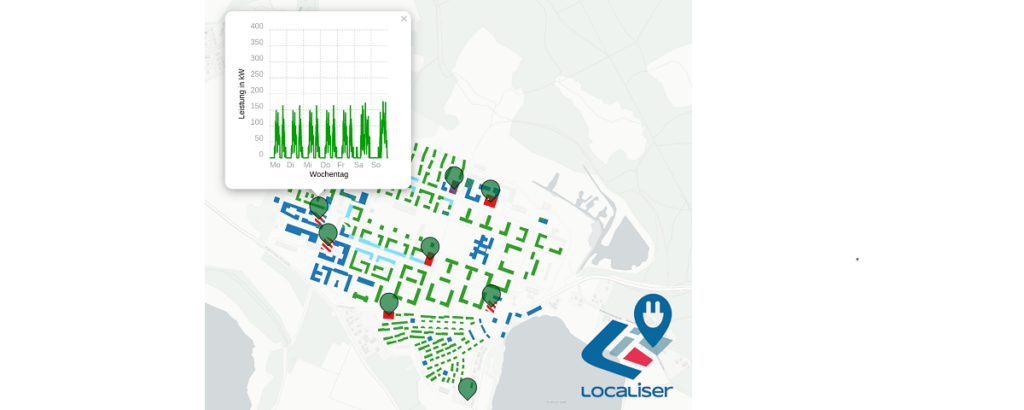Charging infrastructure in the Krampnitz urban district

Project description
In this consulting project, RLI developed a mobility concept and charging infrastructure planning for the newly emerging urban district of Krampnitz as part of a study funded by the BMVI.
On the historic site of the former Krampnitz barracks in the north of Potsdam, a new urban quarter for about 10,000 people will be built in the coming years. The urban quarter Krampnitz is planned as a climate-neutral “quarter of short distances”. Good connections to local public transport (ÖPNV), well-developed cycle paths and mobility alternatives, such as sharing offers, are intended to create incentives to do without one’s own car.
Which forms of mobility are important to future residents?
Among other things, the RLI was tasked with determining the future mobility needs in the Krampnitz neighborhood and, for this purpose, analyzed previous mobility behavior in Potsdam. On the basis of this, and in order to reduce private car use, it can be deduced for the neighborhood that, in addition to well-developed cycle paths and a cycle expressway, well-timed public transport connections, e-car and bikesharing will be important as alternatives. In order to ensure economical operation of the e-vehicles in the Krampnitz neighborhood, the highest possible utilization and thus low idle times are ideal. The size of the vehicle fleet as well as the average kilometers driven per day are of great importance for the energy demand planning. For the various scenarios, the different stakeholders were involved from the beginning.
Quarter garages as mobility hubs with charging infrastructure and sharing offers
The stationary (motor vehicle) traffic including the e-sharing offers is to be completely accommodated in the neighborhood garages. Therefore, a charging infrastructure and supply concept was created for the neighborhood garages based on the mobility and parking space requirements, which would allow derivations on operating scenarios and business models. Possible load scenarios were calculated in order to avoid charging delays and the possible supply variants with renewable energies for the charging infrastructure including load scenarios, charging management of electricity storage systems and peak shaving were analyzed. On this basis, the possible operating and business models were investigated.
Interactive app illustrates the different scenarios
Based on the results and recommendations of the study, which were recorded in an interactive app, the further expansion planning of the network structure of Stadtwerke Potsdam will be continued and implemented in the concretization of an overarching, cooperative operator and business model. The results of this project can be transferred to other neighborhoods under certain conditions, both in terms of energy supply, the determination of the neighborhood-specific mobility offer, the selection of operating models and charging infrastructure planning.
Project duration: December 2019 – December 2020
Tasks
- Assessment of mobility-specific factors
- Identification and involvement of relevant stakeholders
- Determination and application of socio-demographic factors to identify user groups
- Evaluation of the transferability of the study results to other neighborhoods in Potsdam
- Display of the project results in an interactive web app
Results
- Framework conditions that are important for mobility-specific factors:Existing or new development, framework conditions on the size of the neighborhood, number of residential and commercial units, parking space key, traffic connections – existing and in planning stages
- Socio-demographic factors on future residents
- Political requirements: Climate neutrality, “city of short distances”, low-car neighborhood
- Regular exchange with different stakeholders important and carried out in different formats:Individual meetings with stakeholders involved to identify (partial) goals)
- Discussion rounds and workshops
- Regular exchange to stay informed about current developments
- Transferability of the concept is given for neighborhoods with charging infrastructure and energy supply operated separately from the building supply
- Provide maximum possible areas for photovoltaic systems and, if necessary, include roofing, as PV has great relevance not only for mobility supply
